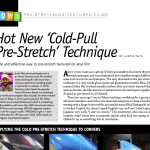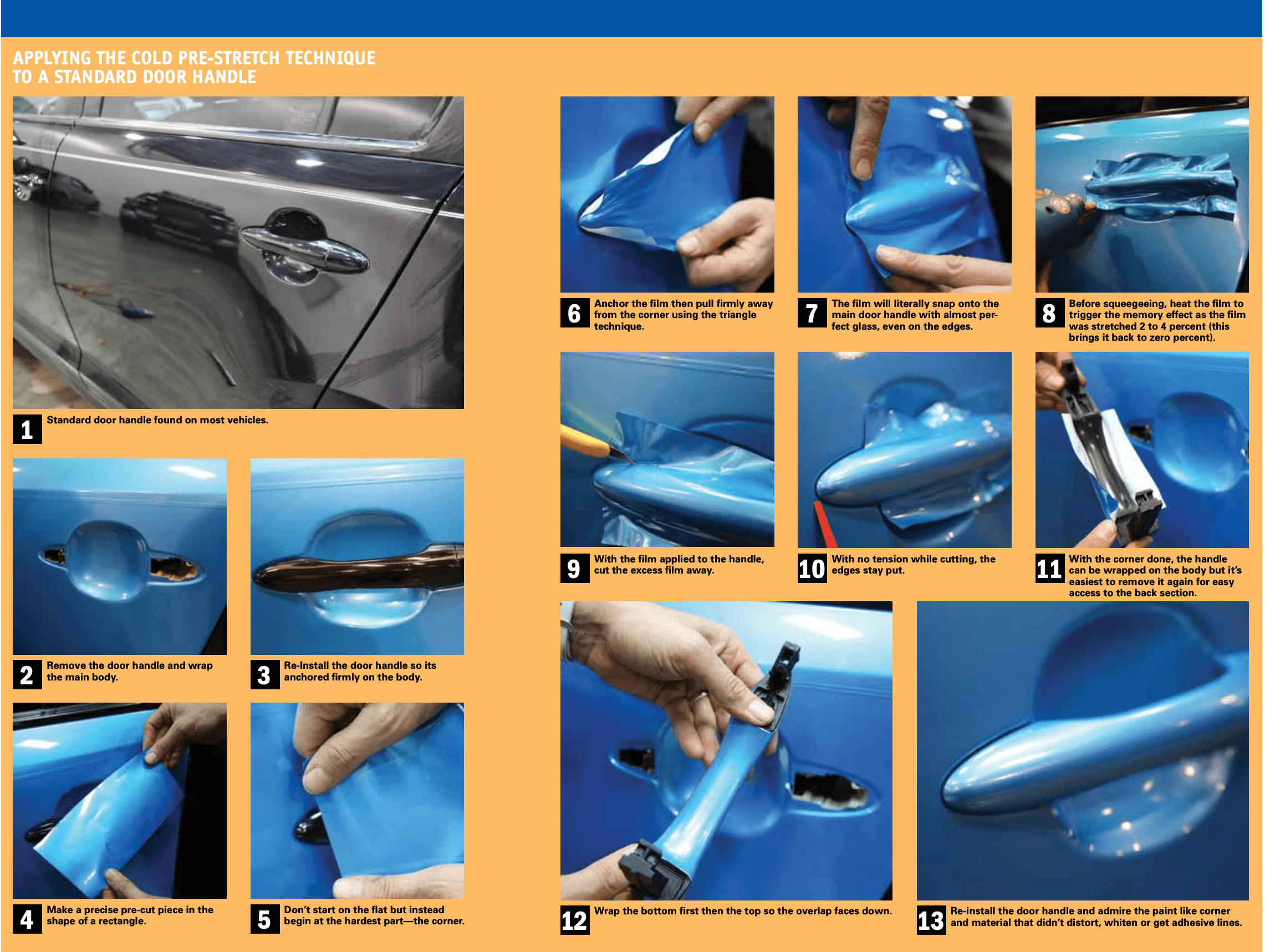
COLD-PULL PRE-STRETCH TECHNIQUE
ABOUT SEVEN YEARS AGO
a group of German installers discovered the pre- stretch technique, and it revolutionized how installers wrapped difficult areas such as mirrors and bumpers. The only drawback to the pre-stretch technique is it only works gloss, matte and gloss/matte metallic films. For textured films like brushed metallic/carbon fiber and multi-layered films such as chrome, the film distorts or whitens when the technique is applied.
As good as pre-stretch is, it's limited. Then two years ago I was in Tokyo teaching a workshop for a group of advanced installers, and while I was demonstrating how to wrap a hood by starting with a hinge in the middle, an installer named Koji Yamaguchi said in broken English (he doesn't speak English very well and I don't speak Japanese very well), "I start on corner." The interpreter, who was not an installer, didn't know how to properly explain what Koji was saying so I
He says that his shop has tried and used every chrome film that is or was available as well as made their own col- ored chrome films in the past (before the manufacturers started making them).
Tomlin adds that the brushed and chrome films could also be used for architectural and furniture wrappings and design as well.
"The material sticks to just about any- thing, and the there are limitless possi- bilities,"Tomlinsays."Thefilmscouldbe added to wrapped vehicles to be used as text accents to add some pop."


Luckily, this May, I was back in Tokyo to teach and oversee a master certifica- tion test. By good fortune, Koji was one of the installers participating. My job during the certification test was to really study the installer's methodology closely, and I noticed Koji and his partner Itoh doing things I have never seen any other installer do (and I've seen a lot of installers-from beginners to "famous" ones). They were starting at the most difficult points first (the corners essen- tially), stretching the material firmly without heat using the triangle technique then, with the film about not quite to the edges, they applied heat, which triggered the memory effect. With the film relaxed, they set up the edges then cut the excess film away, which created perfect, tension- free edges.

I finally understood what Koji meant
when he said, "I start on corner." By starting with the corner there is no ten- sion at the most critical point. By pulling the material away from this point with the material "cold" (Room temperature) the tension shifts to the flatter areas. The film does stretch during this process but only minimally (2 to 4 percent) which is why heat is added just before it's applied to the edges so it "relaxes" (goes back to 0 percent). This is the pre-stretch logic invented by the Germans, but by working the material "cold," it doesn't distort the film. This means the cold

